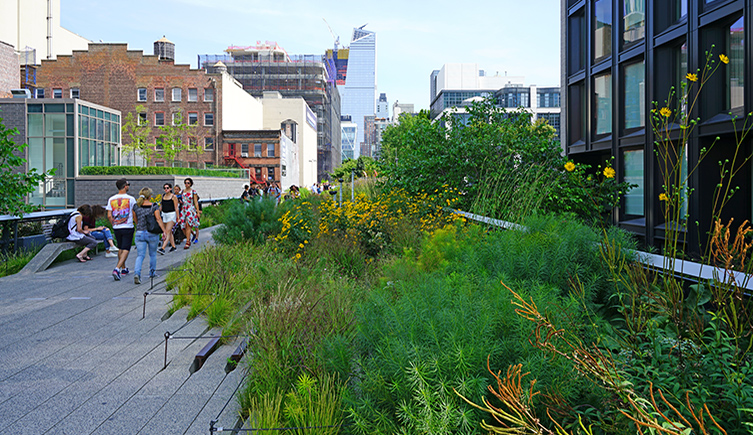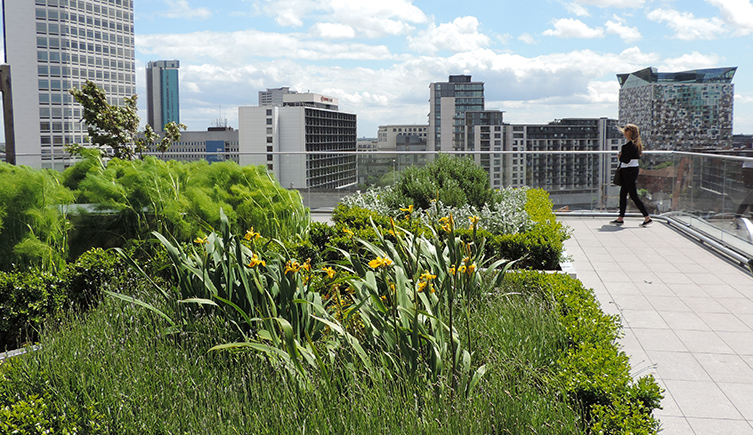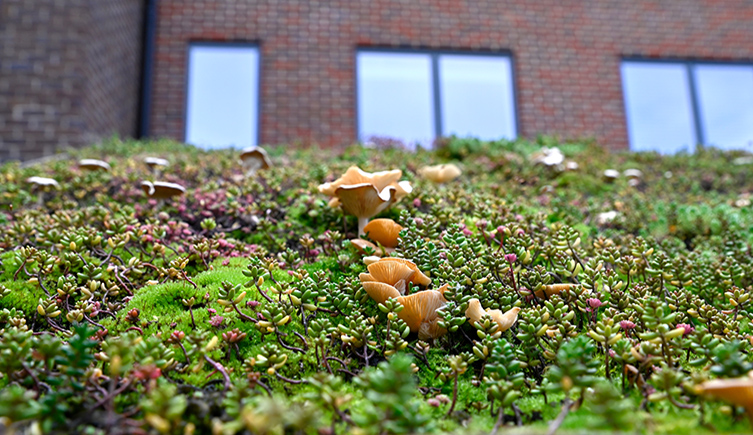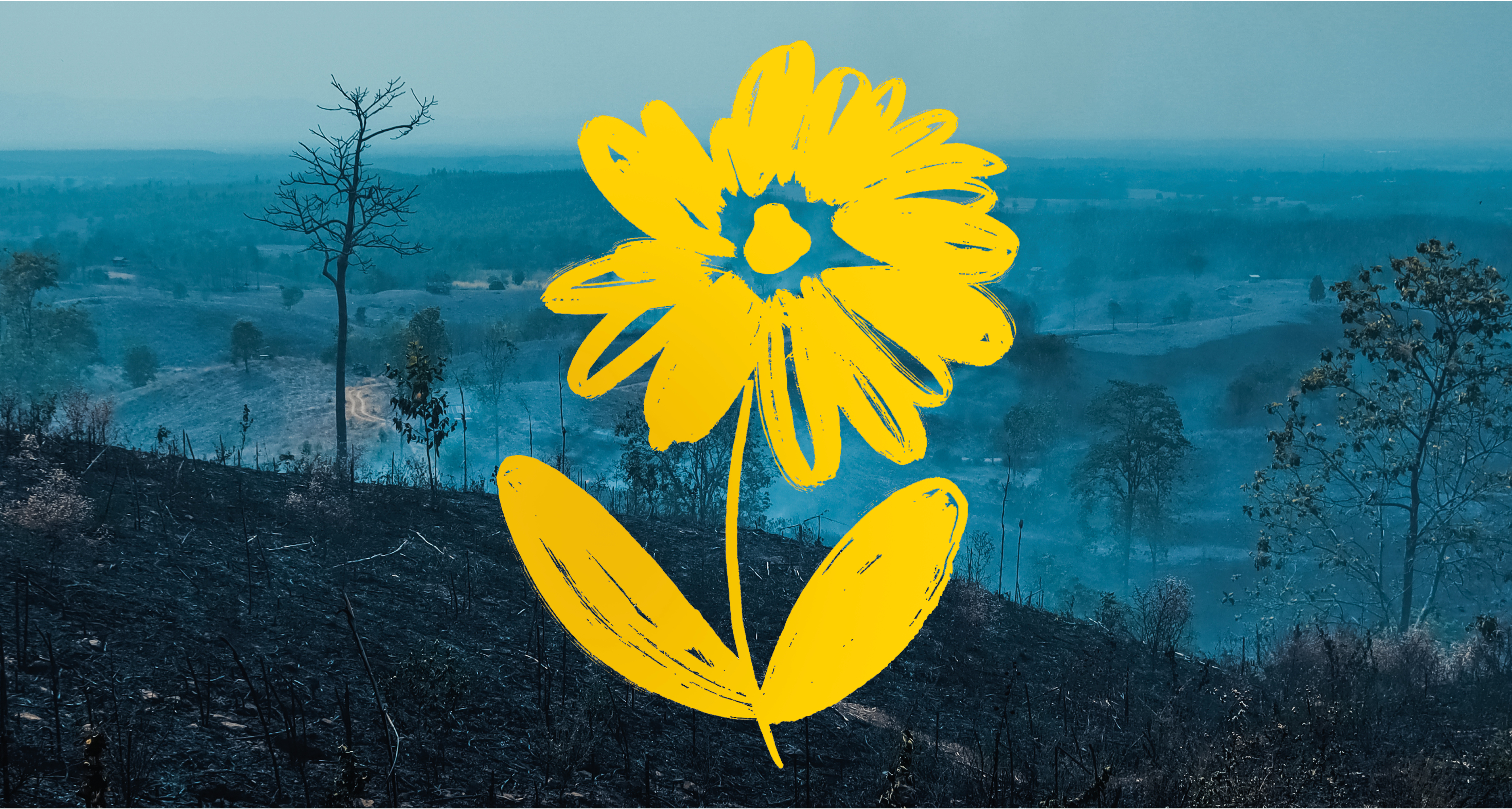Scorched by the Sun in summer and beaten by the wind and rain in winter, the roof of a city building can provide animals and plants with an unexpected place to live, rest and find food.
Bees, rare orchids and hoverflies are just some of the wildlife that can live on urban green roofs.
What is a green roof?
Green roofs are designed to allow plants to grow on their surface. They need to be strong enough to hold not only plants but also a layer of substrate for them to grow in, such as soil, sand or rocks. From above, they look like small, green islands in a sea of concrete.
Shallow, dry roofs or balconies can house succulents, flowering plants and grasses whereas roofs with a deeper layer of soil can sustain shrubs and bushes.
Depending on the climate of the area, the roof or balcony may have systems for either keeping rain water on the roof or draining it away.
Green roofs can boost urban biodiversity
A green roof can house a high level of biodiversity - even if it’s high, dry and has poor soil quality.
Becky Clover, our Urban Biodiversity Officer, says that by making a few tweaks here and there, green roofs can provide even more habitat for certain species.
‘You can create a diversity of microhabitats, nesting places and foraging opportunities for invertebrates,’ she says.
‘With simple features like sand banks and log piles you can bring so much diversity to a small area,’ says Sam Thomas, our UK Biodiversity Officer. In fact, he says you can make a hoverfly lagoon with a simple bucket. ‘It’s just a bucket with some logs and leaf matter rotting down to a wet slurry - the perfect habitat for hoverflies to develop in,’ he says. Hoverflies are some of our most important pollinators.
You can also add bee banks or mounds created from a mixture of sandy soil and logs, or solitary bee hotels for mason and leafcutter bees. Tubes filled with bamboo canes and hollow plant stems attract solitary bees. Structures filled with cob bricks or sand can create a surface for bees that would usually nest in vertical earth banks or crumbling masonry.
In general, green roofs with a mosaic of habitats are great for invertebrates. These include open grassland, wildflowers and areas of bare ground. The open areas warm up in the sunlight, making them suitable for basking invertebrates. Creating different microclimates using features such as log piles offers invertebrates a place to rest and shelter.
What is a biodiverse green roof?
A biodiverse green roof may be designed to replicate habitats similar to those found ona brownfield site - a place such as a wasteland or post-industrial area. Rubble, sand, concrete and crushed building materials are typically found on a brownfield site, and the soil is usually low in nutrients.
The best brownfield sites for wildlife provide a patchwork of varied habitats, or ‘open mosaic habitat’. The nutrient-poor soil conditions and bare ground create pioneer habitats in which early successional plant communities can establish. In the UK, these kinds of habitats are rare and they are important in supporting diverse invertebrate populations.
On these sites, any open ground and rubble warms up in the sunlight, providing basking opportunities for wildlife. The undisturbed nature of these places also gives invertebratesthe space they need to nest, hibernate and lay eggs from season to season.
Some of the species that love the loose substrate and open vegetation of an open-mosaic habitat are burrowing bees, wasps, spiders, beetles and flies.
Connecting urban green spaces
A green roof can be part of a greater patchwork of habitat, food and shelter for wildlife. This is particularly important in cities where green spaces may be fragmented from each other.
‘It’s really important that we provide these stepping stones of green space to provide habitat and connectivity for a range of wildlife, so they can survive and move through these urban environments,’ says Becky.
‘These can include green roofs, gardens, parks, cemeteries, allotments, road verges and even small planters. Green roofs don’t need to be showy or stand out to be providing valuable habitat, sometimes the most unassuming looking vegetation and bare ground can provide the perfect habitat.’
Are green roofs helping to future-proof cities and towns?
It’s not just wildlife that benefits from a green roof, they can also make cities and towns better places for us to live too.
A green roof can greatly reduce the energy a building needs for heating and cooling. On hot days in summer, a green roof can reduce the amount of heat from the Sun that reaches the building below. In winter, it acts as an insulating layer on top of the building that stops heat from leaving.
Green roofs also lower the temperature around the building, reducing what’s known as the urban heat island effect, where the concrete and buildings increase the temperatures of cities and towns.
A green roof can also mitigate air pollution by capturing particles and helping to control water flow by catching rainwater. Some green roofs also have solar panels on them, so they have the dual benefit of providing energy and supporting biodiversity.







Don't miss a thing
Receive email updates about our news, science, exhibitions, events, products, services and fundraising activities. We may occasionally include third-party content from our corporate partners and other museums. We will not share your personal details with these third parties. You must be over the age of 13. Privacy notice.
Follow us on social media